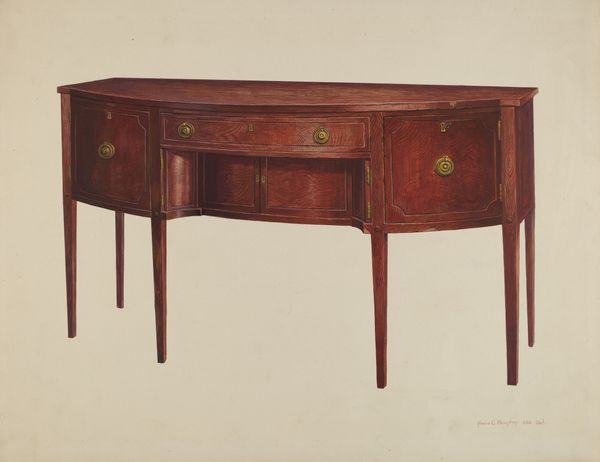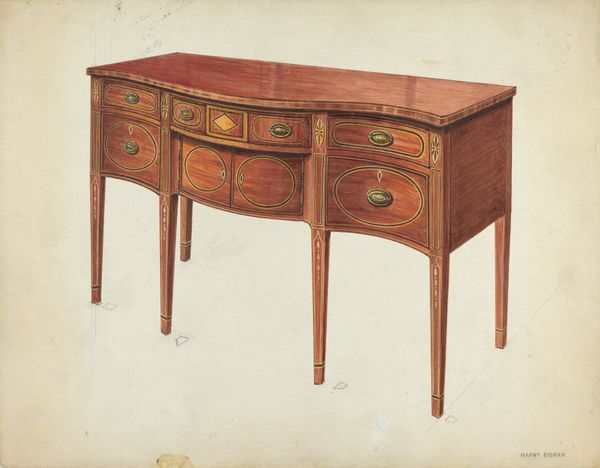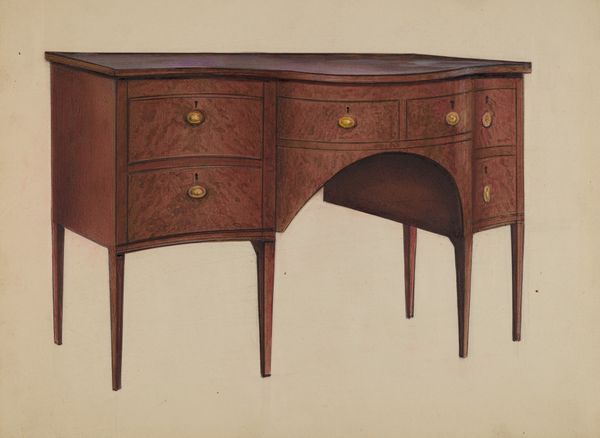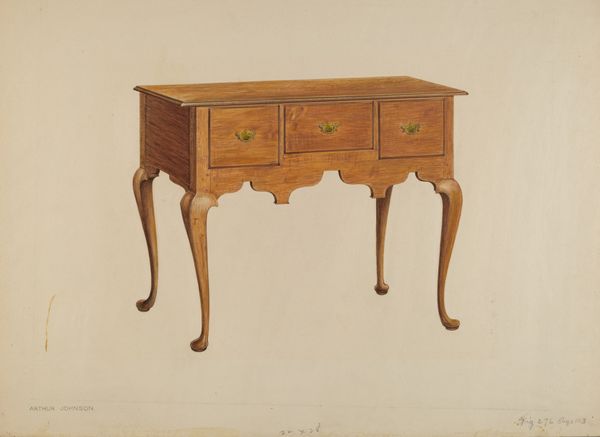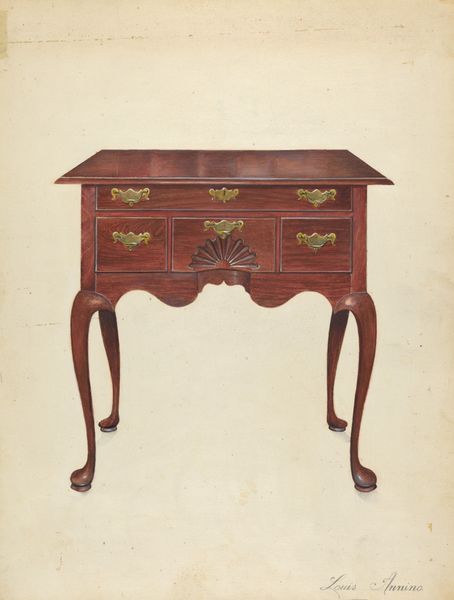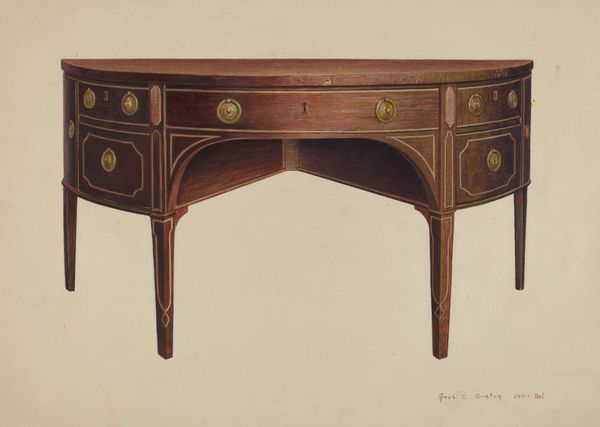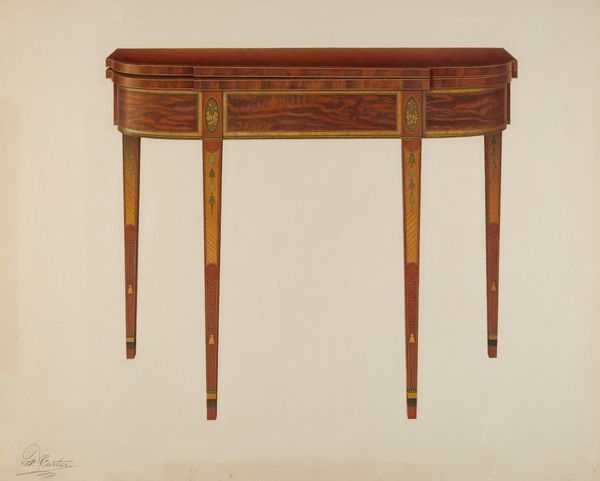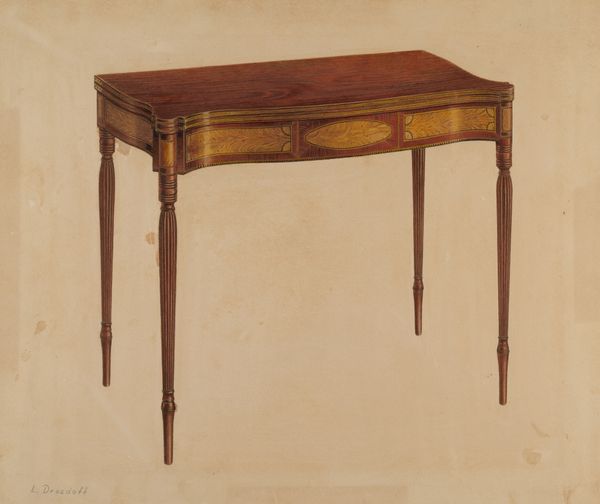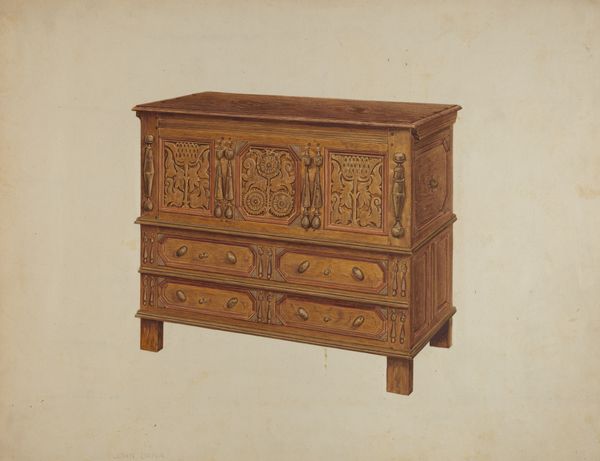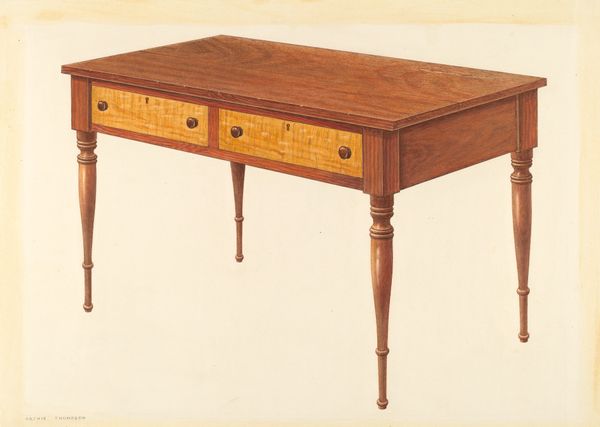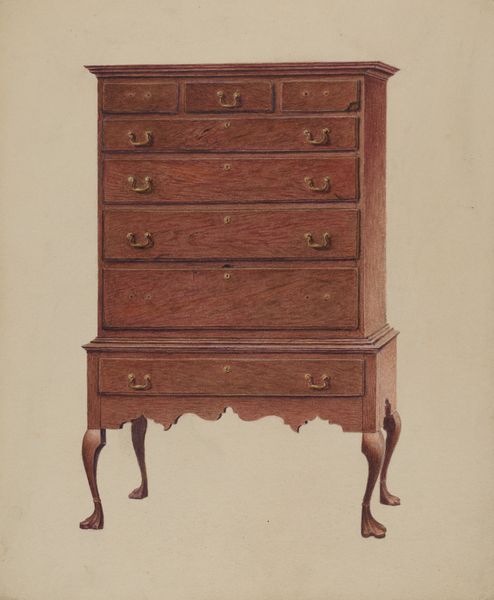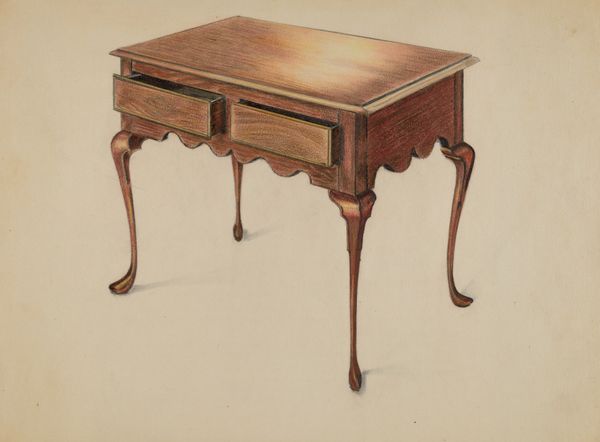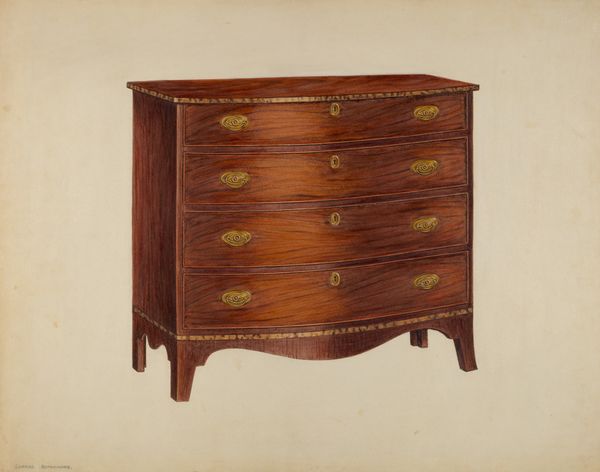
drawing
#
beige
#
drawing
#
aged paper
#
toned paper
#
yellowing background
#
brown and beige
#
golden font
#
decorative-art
#
green and neutral
#
watercolor
#
warm toned green
#
gold element
Dimensions: overall: 22.8 x 29 cm (9 x 11 7/16 in.)
Copyright: National Gallery of Art: CC0 1.0
Curator: What strikes me immediately about this watercolor and ink drawing is how hopeful it is. Maybe it's the golden details on the rich wood, but it feels like it's full of anticipation. Editor: I can see that! What you’re sensing, perhaps, is the way in which furniture like this "Sideboard" embodies aspiration. Created anonymously between 1935 and 1942, it arrives at a crucial moment in the history of American design. Curator: Tell me more. Editor: The piece reflects an interesting point of tension. The machine age promised mass production and affordable, modern design, but simultaneously there was also a deep nostalgia for craft and a yearning for an idealized, historical past. Furniture, then, became a stage where all of this tension played out. Curator: And you can feel that push and pull in the design, can't you? The clean lines, the implied symmetry—it's streamlined, yet still feels hand-rendered with such affection. There is such a lightness of touch in how it's imagined. The paper, beautifully toned, really emphasizes the decorative intent. I bet this sideboard was imagined to become the heart of a room. Editor: Absolutely. These kinds of images often functioned as both design proposals for manufacturers and as visual marketing intended to influence consumers. So they are always about sales and persuading tastes, especially those of the burgeoning middle classes of the interwar period. Curator: What gets me, though, is the level of intimacy. You can almost see the artist's hand moving across the page. The rendering has such precision. It captures not only a visual image, but it holds an echo of how one feels around furniture. This piece, the vision behind it, has a very distinctive atmosphere. Editor: I agree. It brings the question into perspective: in what ways can something intended for the masses also retain some element of soul? Thanks to objects like these, the debates continue on in our own present. Curator: What a marvelous springboard into imagining all of the lively meals and laughter it was supposed to see! Editor: Yes, perhaps this watercolor lets us sense the optimistic possibilities of this era.
Comments
No comments
Be the first to comment and join the conversation on the ultimate creative platform.
